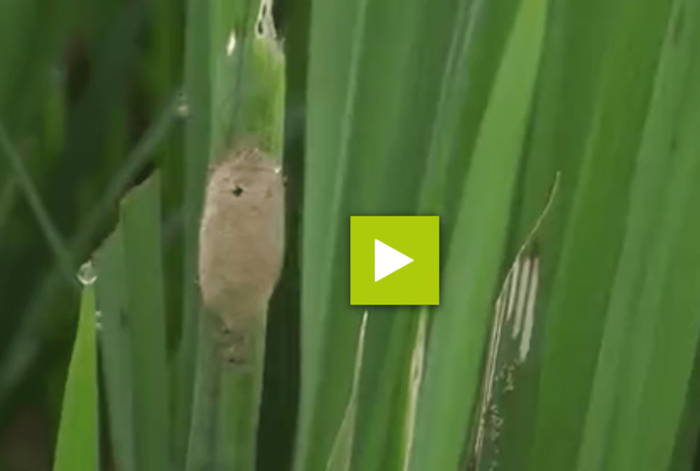Rice is an important staple food in Asia but is affected by many pests and diseases. The rice leaf folder is an important pest of rice that affects rice a different stages.
Management of rice leaf folders is by planting resistant varieties at a normal spacing of 20cm by 20cm to allow in sunlight, use organic fertilizers because too much nitrogen from inorganic fertilizers increase pest incidence, trap the adult moths using light traps and prevent them from laying eggs on the leaves and use of beneficial insects like in parasitic wasps to kill the leaf folders. These lay their eggs in the eggs of the leaf folders and as the wasp grows, it feeds on the eggs of the rice folders and destroys them. Obtain the parasitoid cards and from agro input shops and keep changing hem every 20 days.
Light traps
A simple light trap can be made by using 2 plastic funnels. Having one funnel over the light bulb and the other below the bulb to catch the moths. Attach the 2 funnels together leaving at least 2cm between the funnels. Attach a long tube of 2.5 cm in diameter to the bottom funnel so that the moths will fall into the water underneath. Attach the trap to a pole at a height of 1.5 m to 2m so that the trap is well above the rice canopy. If you do not have electricity, you can use the kerosene lantern.
Simple control methods
Putting T shaped sicks in the rice field which enables birds to rest in the field. The birds eat up the rice leaf folders. You can open the folded leaf and kill the folder caterpillars by hand.
After harvest, the leaf folder leaves remain in the rice stubble and weeds. Burning the sable does not kill the hidden caterpillars but kills all beneficial insects. Use rice straw as animal beddings, for feed or some other use.
Trim and remove grass weeds before staring the next crop because the grass weeds may act as an alternative host or let animals feed on the grass weeds. During crop growth, remove grass weeds.



















